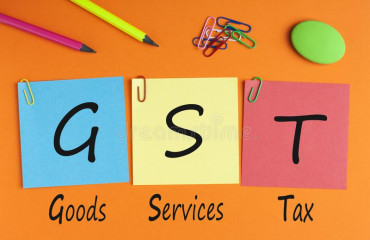
Summary
GST revenue buoyancy should close the chapter of a shortfall cess and prompt reforms aimed at tax simplification. For GST to fulfil its basic promise, start by reducing rate slabs.
Summary
- GST revenue buoyancy should close the chapter of a shortfall cess and prompt reforms aimed at tax simplification. For GST to fulfil its basic promise, start by reducing rate slabs.
India's latest goods and services tax (GST) revenue figures indicate that the regime's initial phase of inadequate mop-ups is over. Overall GST revenue in 2023-24 hit a record ₹20.2 trillion, up 11.7%. Last fiscal year's monthly average GST mop-up was ₹1.68 trillion, up from ₹1.5 trillion the year before. It seems we can finally close the long chapter of shortfall-compensation for states after the mid-2017 switchover to GST from multiple central and state taxes that got subsumed by this uniform levy across the country. The government's five-year deal with states to plug their gaps in case they fell short of a projected GST-revenue incline ended in mid-2022, but the pay-out for this was so large that a cess imposed on top of GST for some goods had to be extended till March 2026 just to pay off the debt taken to fully compensate states. Now that our GST intake—which is split by the Centre and states—is finally showing a steady upward trend, perhaps that loan can be foreclosed and the cess dropped ahead of time. As cesses add to taxation complexity, it would mark a small win for the idea of a "good and simple tax," as GST was meant to be. Sustainable relief from a revenue crunch also makes space for GST reforms to simplify how it is levied in India. This is what the GST Council must turn its attention to at the earliest.
Let's recall why GST adoption was hailed as a critical reform. Its uniformity, which made India 'one market' for the ease of business, was one aspect. Its fostering of specialization along value chains was another. As a tax applied only to value addition by a taxpayer (with input-tax credits available), GST was designed to prevent tax bills bloated by one levy upon another. This not only moderates commercial costs, it favours value chains determined by skills more than taxation policy, as having more profit-oriented business units as links in a supply chain does not result in costlier final output. This prospect of enhanced economic efficiency went along with a promise of rate clarity and stability. An ideal GST regime would levy a single rate on every good and service, forming a system that can be held stable for the foreseeable future, closing the scope for confusion, rate inversions, tax-relief lobbying and rate-related squabbles. Unfortunately, not only has GST compliance caused much hardship, our rate slabs have splintered and shifted so often that today's structure is riddled with complexity. We have too many rates, and with many items that look arbitrarily slotted into one slab or another.
A single-rate GST was rejected right at the start on the argument that it would be acutely regressive, with the rich paying too little and the poor too much as a slice of their incomes. But then, indirect taxes are always regressive, regardless of rate variation, and it's the job of progressive direct taxes to lend taxation fairness. Clearly, it's more about varying rates to squeeze items that can be charged more on the pretext of rich people using them (or their use needing to be deterred). Since multiple rates underpin today's GST-intake calculus, we can start simplifying it by adopting a clear three-slab regime. Most items should be taxed at a central rate that meets our revenue target, with two exceptional slabs for a tiny bunch of obvious items that need to be either relieved or overtaxed: a low-rate merit slab and a high-rate demerit bracket. All other deviations should be axed. This way, GST will get a chance to fulfil its conceptual promise of clarity, tax-policy stability and economic efficiency.
